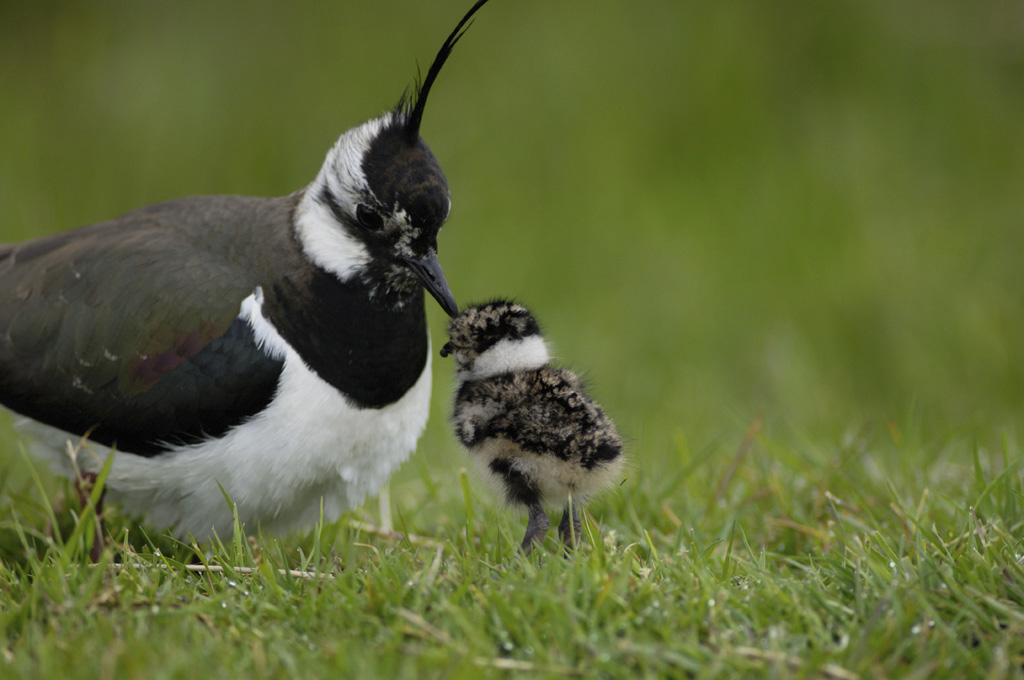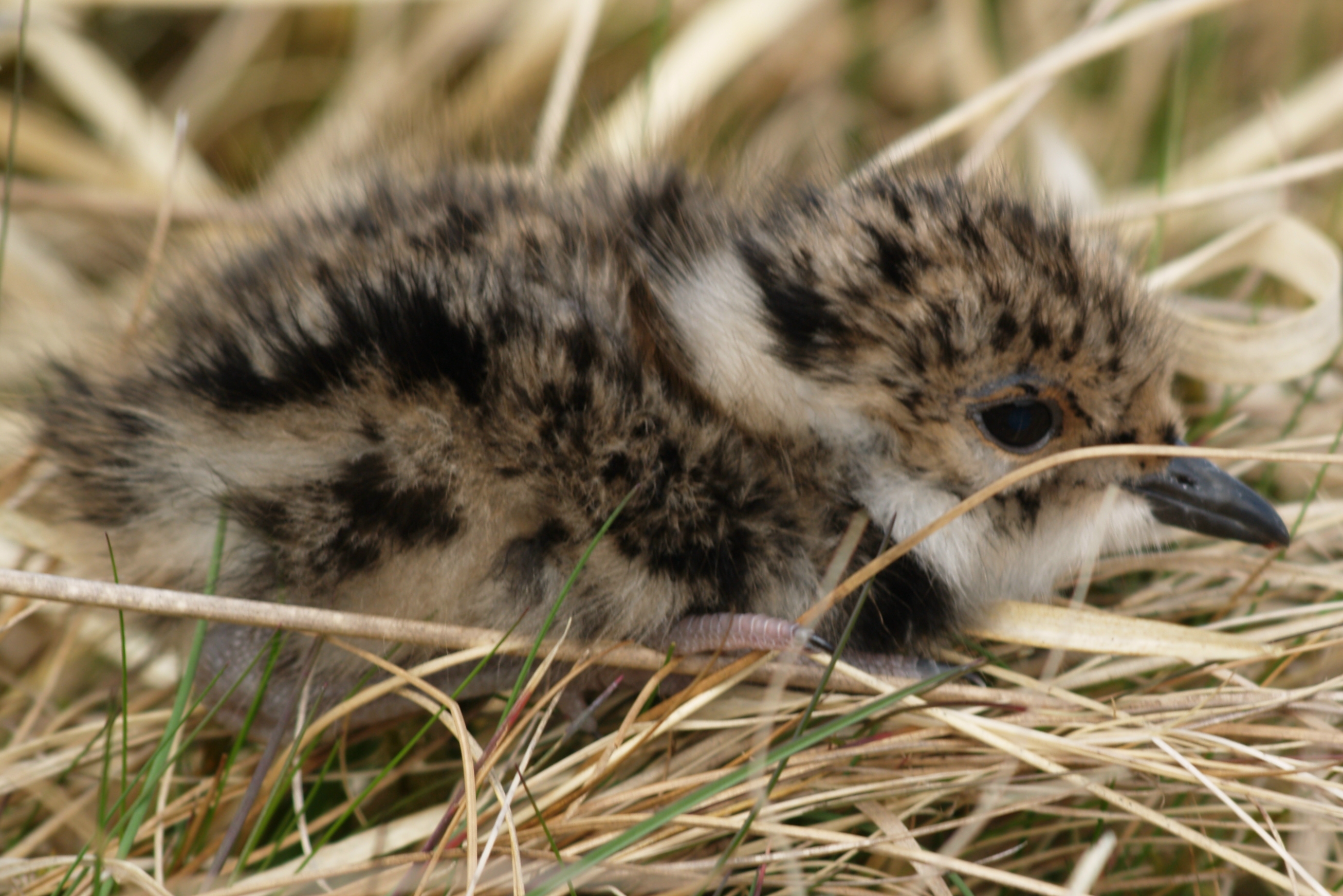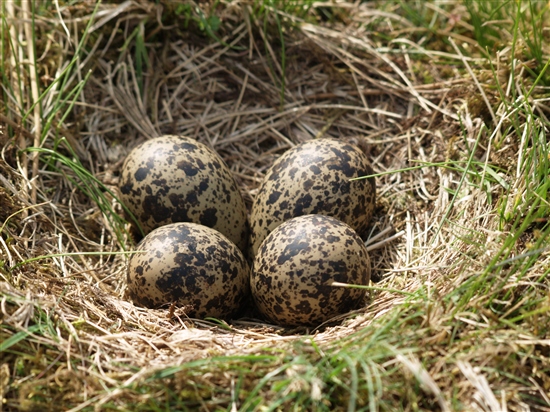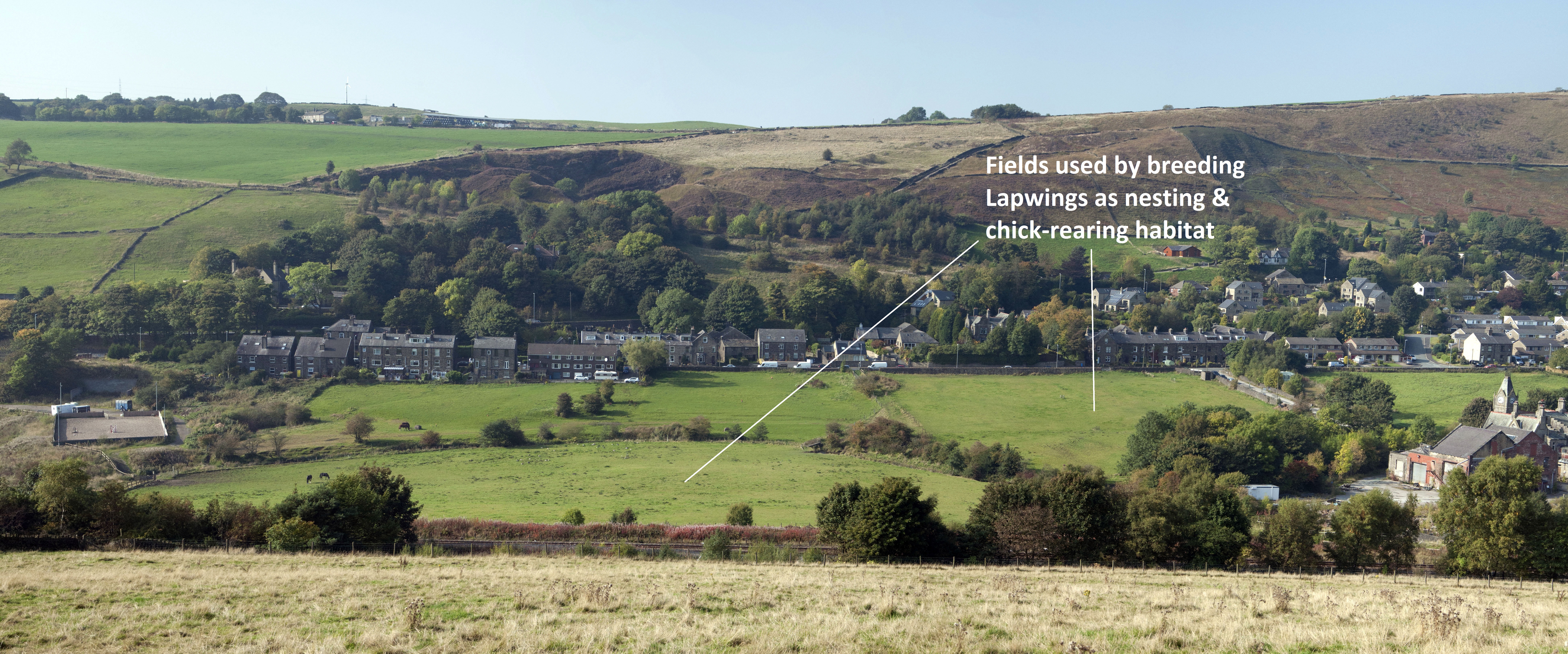Tragic loss of a significant Lapwing nesting site
......for a Sport Pitch development that Sport England described as being a 'missed opportunity' and 'not fit for purpose' !

In 20o7 the former Dobcross Loomworks site + adjacent Green Belt land were aquired by WRT developments. For many decades prior to 2007 the Green Belt field provided breeding habitat for Lapwings (a ground nesting wading bird). Lapwings choose this field to nest & raise chicks because it is part of a river floodplain and therefore provides the 'wet grassland' habitat that lapwings need to raise chicks.
In 2007 a local ecologist undertook surveys across an area of 9 square kilometres, including the land surrounding the former Loomworks site, as part of an RSPB project. That survey revealed the importance of the site for this species (a 'Priority Species')
Results
Fields within the site were the most important in the area supporting a high density of breeding lapwings with a high breeding success in terms of number of chicks reared per pair. The fields to be lost to development supported 9 pairs of breeding lapwing in 2007 and they successfully reared 13 chicks to fledging. This represents tremendous breeding success. Nesting lapwings were scarce in the wider area (there was only one other field where (just two) lapwing chicks hatched on the edge of the 9kilometre square study area).
National declines
Lapwings have undergone a 80% decline since 1960 & it is rare for lapwings to fledge as many chicks as at this site (1.44 chicks per pair) - it shows a high quality breeding site with lots of invertebrate food for the chicks to eat (as would be expected in floodplain pasture. Lapwings require wet habitat with short grazed grass in which to nest and feed - the fields adjacent to Diggle brook (within the development site) are ideal because they are part of a functional floodplain and the soil is moist all year around and regularly inundated with water through surface water flooding and river flood events. (The Environment Agency classifies parts of the habitat as flood zone 3a and 3b). Scientific studies show that the presence of wet features and grazing management has significant influence on breeding success.



Habitat degredation
After 2007 lapwings nested each year up to and including 2013. In spring 2014, prior to the initial ecology surveys being carried out for the Education Funding Agency feasibility study - grazing management was stopped. The removal of grazing management resulted in the grass growing to a height that would prevent lapwings from nesting. It does not reflect the quality or potential of the habitat to support lapwings and it does not represent a change in behaviour of the birds - they were prevented from nesting in their habitat.
Any data from surveys carried out after the habitat was ‘degraded’ should be discounted i.e. from 2014 onwards when grazing was removed during the peak of the lapwing nesting season. Instead, the baseline conditions should be taken from 2007, which was a comprehensive monitoring survey. It was carried out throughout the lapwing nesting season and reflects the true value of the site for this Priority Species.
Failure, even to propose mitigation for loss of this high quality breeding habitat!
The type of habitat to be lost to development – high quality river floodplain habitat - is not available in the surrounding area. Surrounding fields are largely improved sheep grazing with few wet features – much less suitable for nesting lapwings. Any suggestion that lapwings can just ‘move to the surrounding area’ should not be considered valid and should not be considered a valid approach to mitigation. Habitat loss is the main reason underlying lapwing declines. There will be a net loss of lapwing habitat as a result of this development, but the situation is made worse by the fact that it also happens to be the best quality habitat in the district area.
Lapwings are a Priority Species for conservation and are declining as direct result a result of habitat loss. Therefore, in choosing to develop this important site for lapwings over any other site, Oldham Council are obligated to mitigate the loss & provide like for like replacement. The data collected in 2007 shows that the area to be lost is capable of supporting nine pairs of breeding lapwings.
Therefore Oldham Council should be obligated to fund and provide replacement habitat capable of supporting nine pairs of breeding lapwings.
......but they will not do this - they have utter disregard & disrespect for wildlife. Many local residents, with their children & grandchildren - enjoyed the connection with nature they experienced when walking alongside the fields on the Huddersfield Canal towpath - watching the birds tumble & display & watching the parents feed their delightful chicks. To some planning officers & a large number of the planning committee - it is incomprehensible (even laughable) that people might obtain joy & pleasure from wildlife & nature. Lapwings have no commercial value - so they do not matter.
